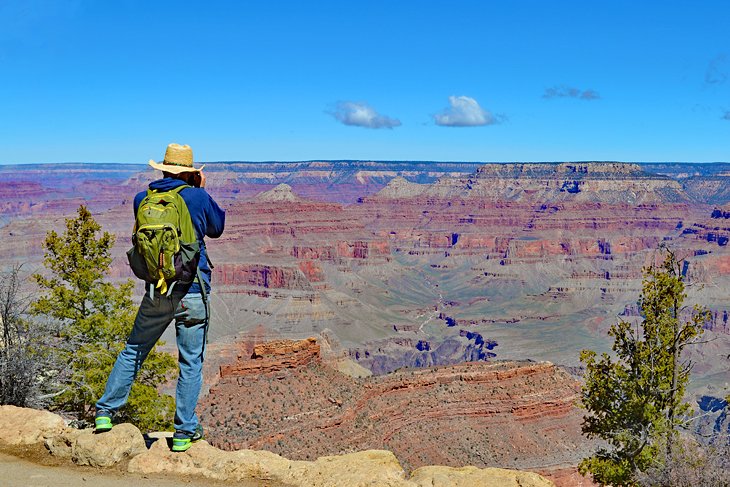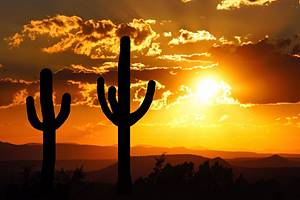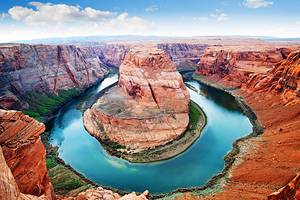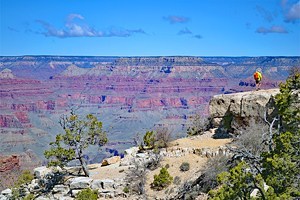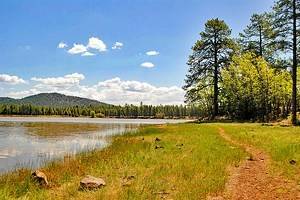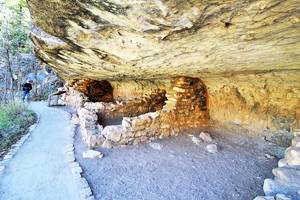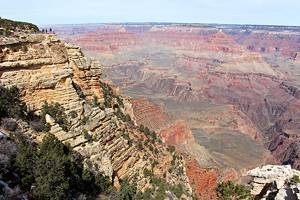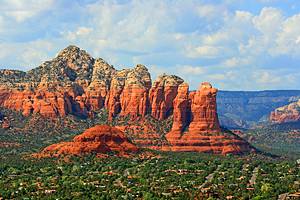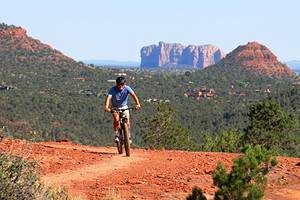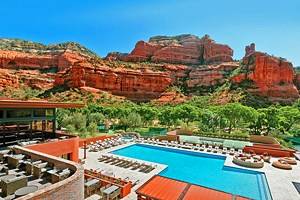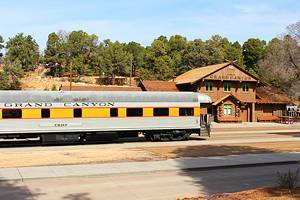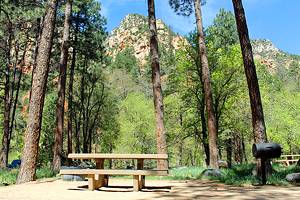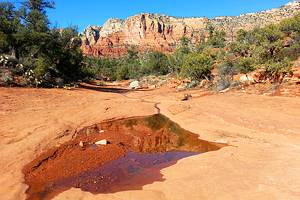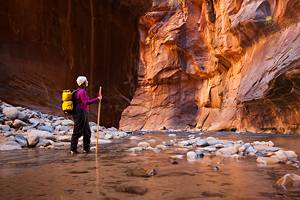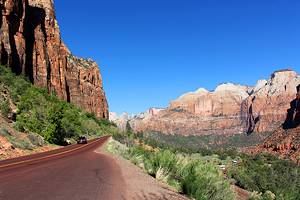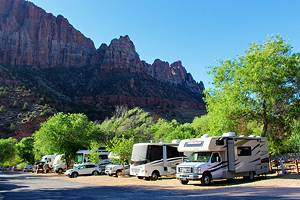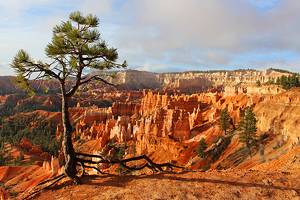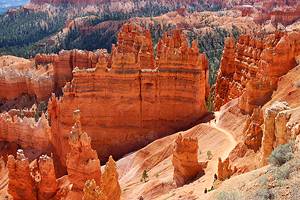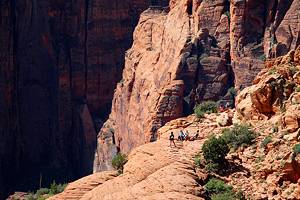Tourist Attractions at the Grand Canyon
The Grand Canyon is one of America's most famous and awe-inspiring natural attractions and has been a road-tripping destination for generations.
The North Rim and South Rim are accessed from opposite sides of the canyon, but most people visit the South Rim of Grand Canyon National Park. The North Rim is closed in winter, but the South Rim and West Rim are open year-round and easily accessible from tourist destinations like Las Vegas, Phoenix, Sedona, Flagstaff, and Williams.
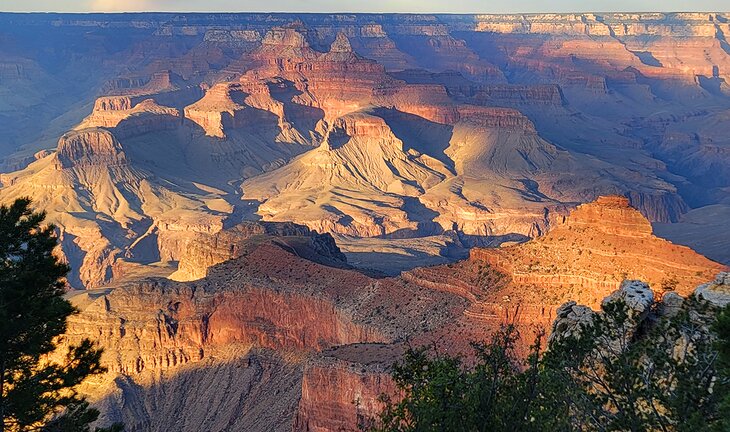
The attractions listed below are all found on the South Rim, with the exception of the Skywalk at Eagle Point, which is located at the West Rim.
The main access point for the South Rim is the South Entrance, where the main visitor center is located. It is also possible to enter via the east, at the Desert View Entrance, but for most people, this is a less convenient option.
From the South Entrance Visitor Center, you have two main options for exploring the park by road: Hermit Road runs west, past the small resort area of Grand Canyon Village, more commonly known as the Village, to numerous overlooks. This road is open to private vehicles from December 1 to the end of February, but outside of these dates, you must use the park shuttle buses. The shuttle buses in the park are free and there are three main routes.
The other option, open to cars at any time of year, is the Desert View Drive, which heads east from the Visitor Center for 23 miles to the Desert View Watchtower. Both of these drives are fantastic and provide different perspectives of the canyon.
A variety of tours offer exceptional ways to experience the Grand Canyon, from helicopter rides to white water rafting.
Accommodation is available in the national park at the Village and is operated by a concessioner of the park. Just outside the South Entrance is the small town of Tusayan, with a much larger variety of chain hotels, as well as restaurants and other services. Camping is also available near the Village and near the Desert View Entrance.
Grand Canyon South Rim Attractions
Visitor Center & Mather Point Overlook
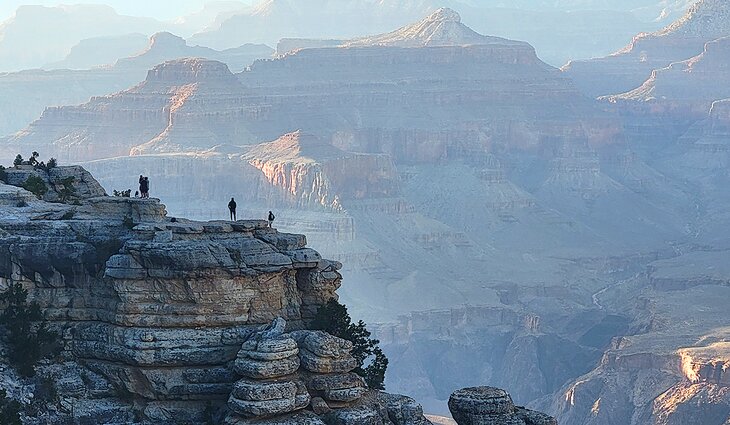
If you are entering the park at the South Entrance, from the direction of Williams, the best thing to do is head directly to the visitor center. A few displays show a brief overview of the park and a little about its history. The park staff are on hand to answer questions and provide information on hiking trails and attractions.
From the visitor center, a short path leads to Mather Point Overlook. This is one of the most popular lookouts in the park, not only because it is spectacular, but because it is easy to reach. Here, a couple of large viewing areas on a peninsula jut out into the canyon, offering beautiful vistas over the landscape.
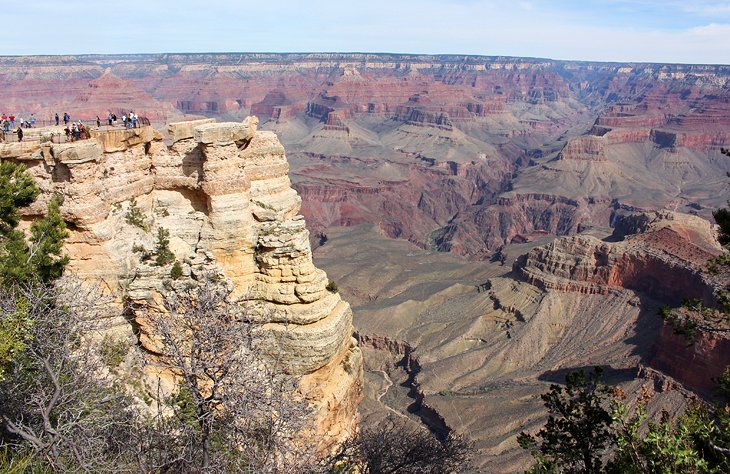
It's a wonderful spot to watch the sunrise over the Grand Canyon or to see the colors change on the walls across from you in the late afternoon sun. There is no bad time to visit, the views are amazing.
Rim Trail
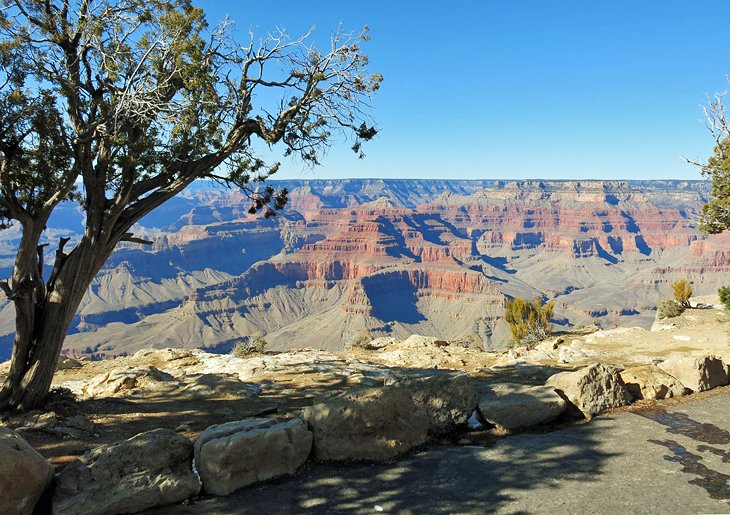
The Rim Trail is a mostly paved walking path that follows the rim of the Grand Canyon for 13 miles. It runs from South Kaibab Trailhead, east of the Visitor Center, to Hermit's Rest, at the far west end of Hermit Road.
This nearly level path, with a mix of sun and shade from scattered trees, is one of the most scenic walks in North America, with fabulous views along the entire distance of the trail.
You can access it in front of the visitor center at Mather Point, in the Village, or from any of the scenic stops along Hermit Road. If you have limited time and are only interested in a short walk, a good option is the section from Mather Point, heading west to Yavapai Point and the Geology Museum.
Geological Museum
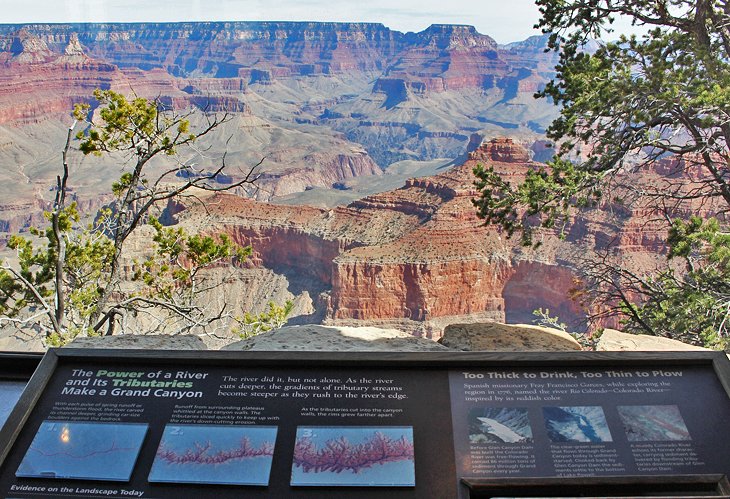
One of the most interesting and informative exhibits in Grand Canyon National Park is the Geological Museum. The location for this museum was chosen by a group of high-profile geologists in the 1920s because the views from here were the most representative of the geology of the canyon.
The museum describes in detail the layers of rock visible as you look out the long wall of windows. Huge diagrams describe the formation of the canyon, from the uplifting of the rocks to the erosive power of the water running through the canyon far below.
From the windows, you can see the hiking trails below, including a great view of the route out to Plateau Point, an offshoot of the Bright Angel Trail, and a side path leading down to the Colorado River.
Hermit Road Drive
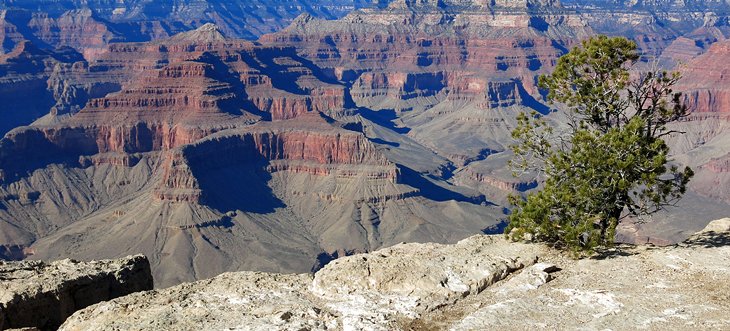
Hermit Road is a seven-mile scenic drive along the canyon rim, with numerous viewpoints. This is the most popular route in the park.
If you are visiting between the beginning of December and the end of February, you can do this drive in your own vehicle. From March 1 to November 30 you must use the park shuttle buses, which operate every 10 to 15 minutes and stop at nine overlooks.
All the overlooks along this route offer incredible vantage points over the canyon. Although it may be the source of some debate, some of the best views can be had from Maricopa Point, Hopi Point, The Abyss, and Pima Point. If you are short on time, you may want to skip the last stop, Hermit's Rest.
Desert View Drive
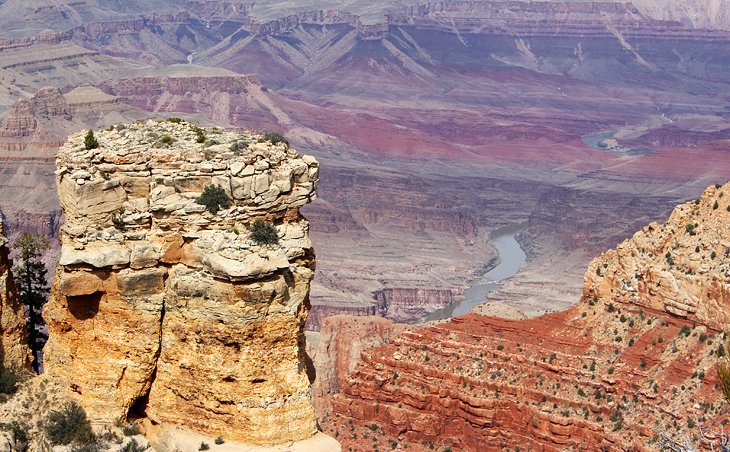
While most people tend to gravitate towards Hermit Road, the 22-mile Desert View Drive is equally, if not more stunning. One of the main differences is the view of the Colorado River, which is much more visible from some of the stops along this drive than on the route further west. Here, you can see white water rapids, and long, wide sections of the river snaking through the canyon in the distance.
There are fewer stops along this route, but they are all worth taking the time to enjoy the lookouts.
View Points on Desert View Drive from West to East
Grandview Point is the first stop along Desert View Drive after you leave the Visitors Center/Mather Point. This is one of the highest lookouts on the South Rim and definitely worth stopping to see.
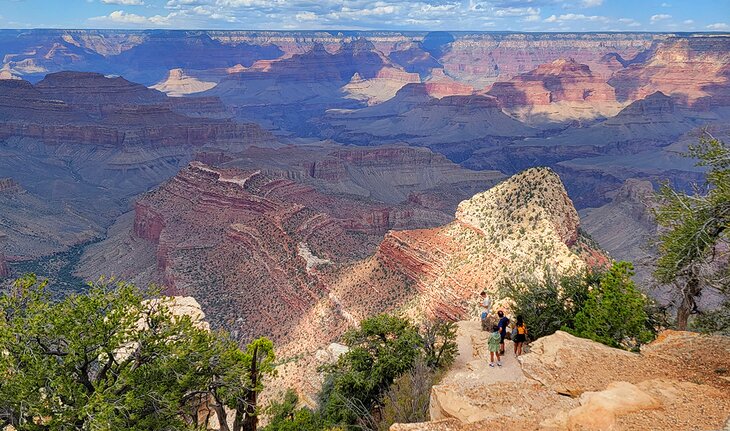
From the viewing area, the Grandview Hiking Trail leads down in a steep descent, quickly disappearing out of sight. This is a strenuous hike on an unmaintained trail and best suited for serious hikers. The trail conditions here are more difficult than Bright Angel; slippery in the spring and hot in the summer.
Moran Point is a highlight along this drive, with a beautiful view over the Colorado River from the far east side of the parking area and a myriad of different colors visible in the rock walls across the canyon.
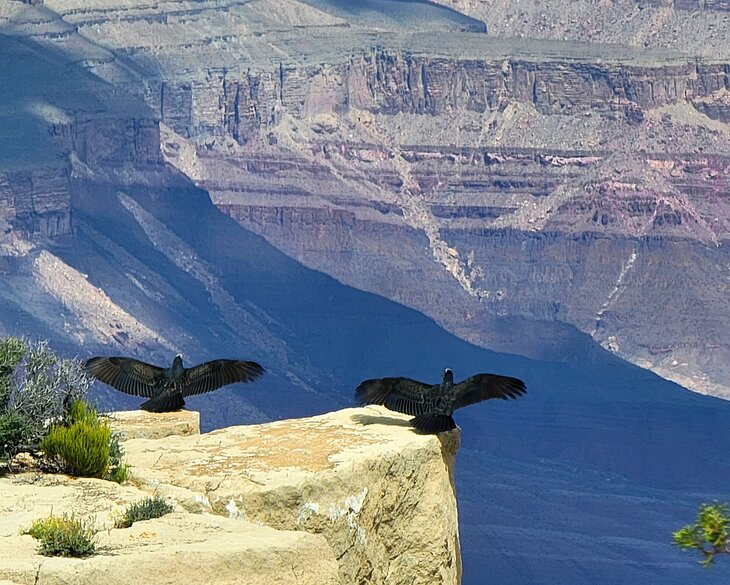
Also found along Desert View Drive is the Tusayan Museum and Ruin. The museum itself is quite small, with information on the people who inhabited this area and a short trail leading through the ruins offering a close-up look at the dwellings.
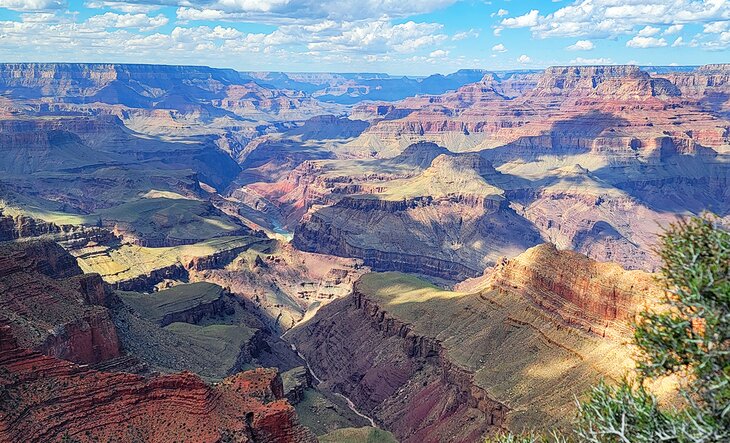
Lipan Point has more wonderful views of the Colorado but is also a noteworthy location for birders. This is the most direct route across the canyon for migrating birds, which use this more narrow section on their flight path.
From Navajo Point, the last stop before Desert View Watchtower, the watchtower is visible off to the right, and can be a good photo opportunity if you have a long lens.
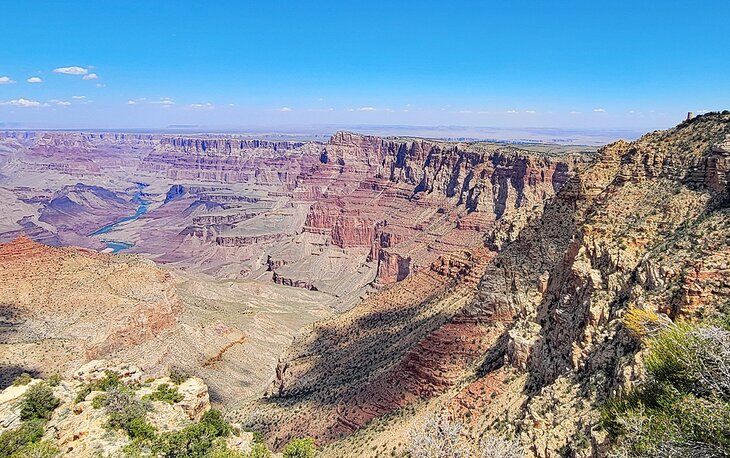
The last stop is Desert View, with the watchtower standing proudly on the cliff edge, and it is definitely a highlight on this drive.
Bright Angel Hiking Trail
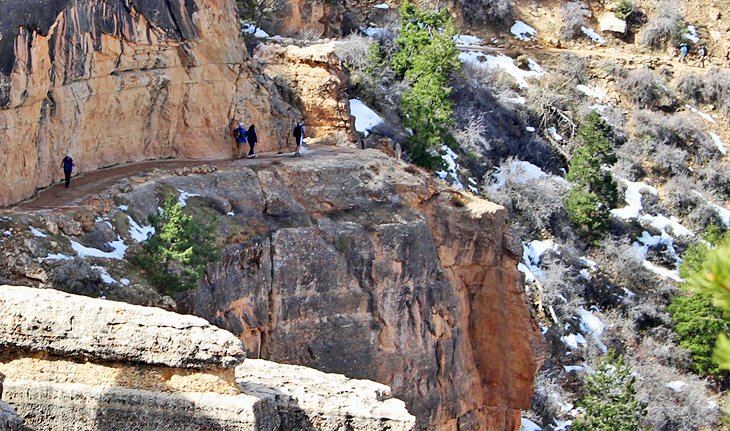
The most popular hike in the park is the Bright Angel Hike, which departs from the Village, where the shuttle bus to Hermit's Rest begins its route. This is a long hike, but many people choose to walk down the trail only a short distance to get a feel for the hike. The complete route, round-trip to Bright Angel Campground, is 19 miles and takes two days.
Many serious hikers choose to go to Indian Garden Campground, which is a nine-mile round-trip hike and takes between six and nine hours. Keep in mind that this includes a strenuous hike with more than 3,000 feet of elevation change.
For a short sample of the trail, the Upper Tunnel is only 0.4 miles round-trip and takes less than 30 minutes, and the lower tunnel is 1.7 miles and takes between one and two hours. This hike hugs the canyon walls, with steep cliffs and sharp drops off the outer portion of the trail. It is not suited for anyone with a serious fear of heights. Some portions of the trail are in shadow and may be snow or ice-covered, even when conditions at the top are warm and dry.
The park service, in conjunction with private donors, has recently made significant improvements to the Bright Angel trailhead. In the past, finding the trailhead was not always the easiest thing to do, but now, with a brand new plaza and improved signage, that issue is long gone. In addition to the new plaza, you'll now find flush toilet washrooms, a sitting area, a shade structure, and a water-bottle-filling station. A new parking lot accommodating 90 cars and improvements to the walking trail to make it wheelchair accessible were also added.
Desert View Watchtower
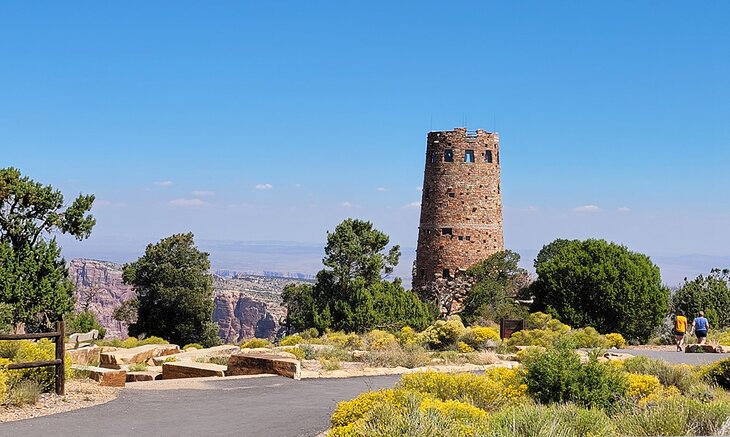
Desert View is the first stop in the park if you are coming from the east and entering the park through the Desert View Entrance.
Despite its appearance, the 70-foot tower is not an ancient, crumbling stone ruin. It was built in 1932 and is one of four structures in the park designed by Mary Jane Colter, all of which are on the National Register of Historic Places.
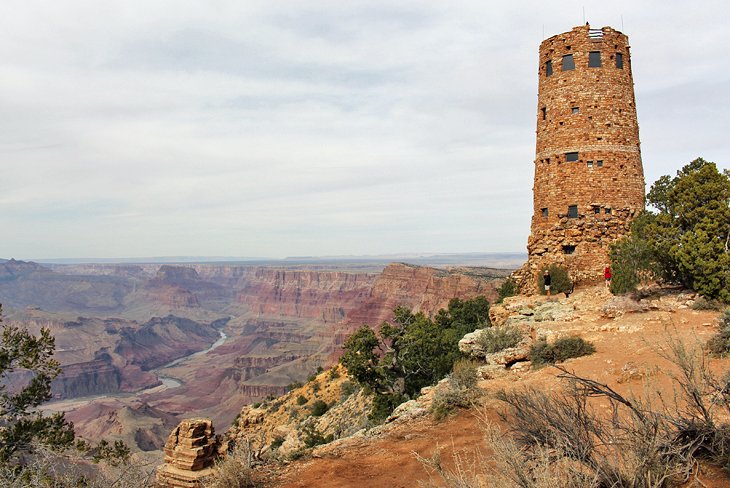
The structure is designed to look like an Anasazi watchtower, and much attention was given to detail in its creation. The tower is built around a concrete and steel structure, but the stone exterior, with uneven rooflines, creates a dramatic effect, as it blends in with the surrounding colors. The interior walls, visible on every level from the circular balconies and stairways, are covered with what is meant to look like petroglyphs and ancient artwork.
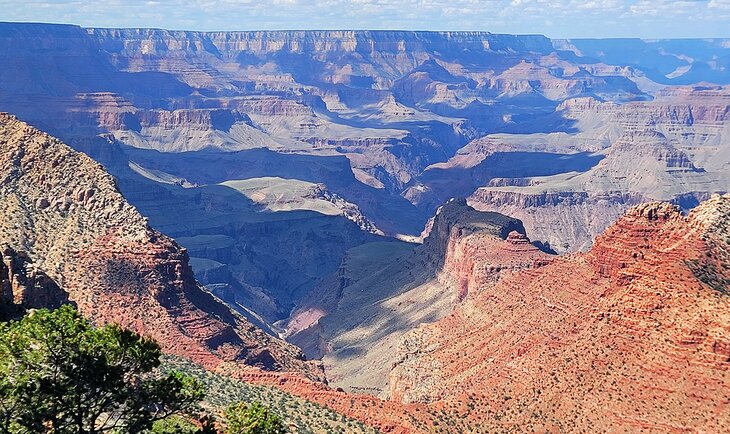
There is an outdoor observation deck on the second level and an enclosed observation deck on the top floor, with incredible views out over the canyon and beyond to the desert on the east side. At busy times, you may have to wait in line to access the upper floors.
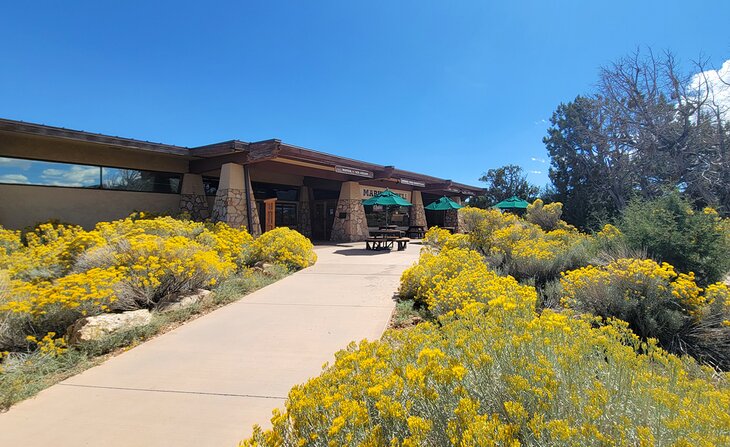
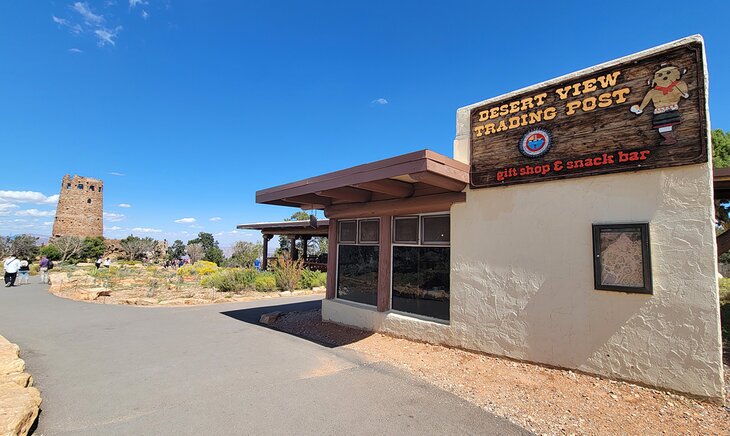
This is a full-service stop with a general store (Market and Deli), trading post, and camping. You can grab a bite to eat, pick up any supplies you need, or buy a souvenir.
Lookout Studio and the Kolb Gallery
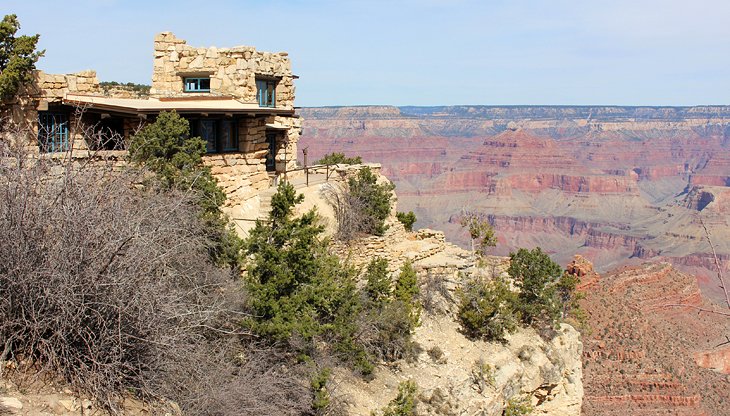
In the Village, the Lookout Studio and the Kolb Gallery are both perched along the canyon wall. The Lookout Studio is housed in one of the Mary Jane Colter Buildings that are found throughout the park, with a traditional stone design, meant to resemble a ruin. The Studio sells souvenirs and trinkets but also has two outdoor viewing decks that look out over the Grand Canyon.
Just a short walk to the west of here is the Kolb Gallery, in a dark brown, wooden structure. This historic Victorian home was built in 1905 and belonged to the Kolb brothers, who were early adventurers in the park. Today, the building serves as an art gallery, with changing exhibits, a small store selling books, and information on the life of the Kolbs. The Kolb Gallery is near the start of the Bright Angel Trail.
Wildlife Viewing
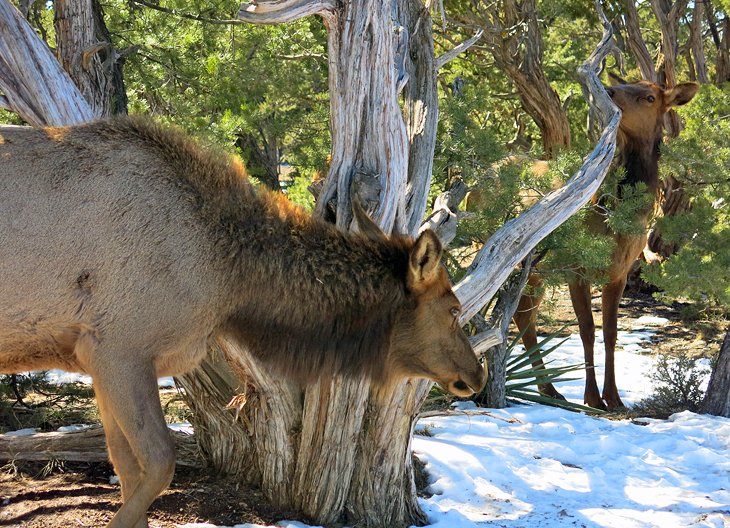
While most people don't come to the Grand Canyon for the wildlife viewing, it's more than likely you will see at least some animals if you are driving through the park. One of the usual suspects that can often be spotted along the Rim Trail is elk.
Although you are less likely to see them, mountain lions live in the park forests, and signs along the Desert View Drive advise drivers to watch for them on the road. Also found in the park are bighorn sheep; hog-nosed skunk; mule deer; Arizona's state mammal, the ringtail; and many other smaller critters, including the Kaibab squirrel.
Camping in Grand Canyon National Park
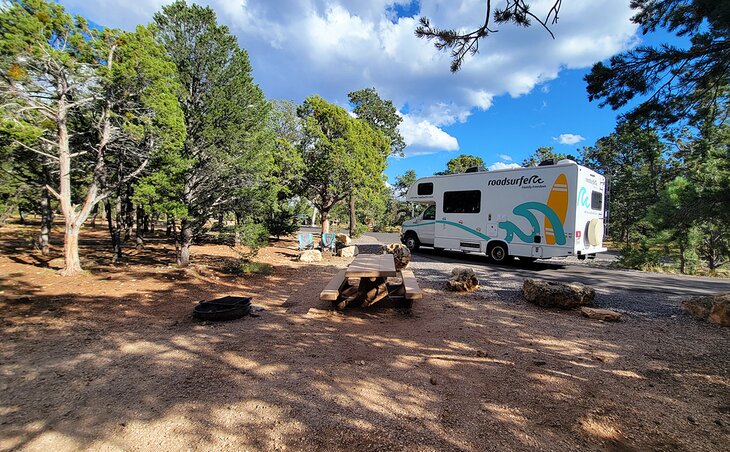
Camping is a wonderful way to appreciate this natural wonder. The campgrounds are beautiful, although they don't have the big views over the Grand Canyon. Sites are tucked in wooded areas with plenty of distance between campsites.
Spending a night is a great way to be onsite for the early morning and later afternoon, which are the best times to see the Grand Canyon. Add to that star-filled dark skies at night, wildlife wandering around the forests (watch out for ravens stealing any food left out), and the smell of pine trees in the air.
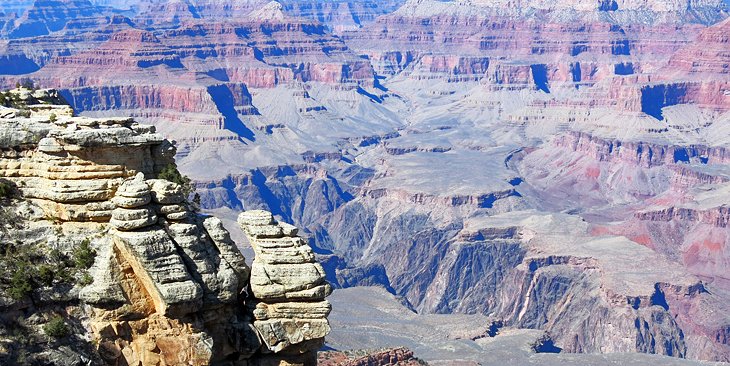
Mather Campground is near the Village and arguably the best place to camp. It's close to everything and you can catch the free shuttles to explore the park. The Desert View Campground offers a similar experience but is out near the Desert View Entrance, quite a distance from the central attractions. It is also not serviced by shuttle buses.
The campgrounds accept tents and RVs and are not expensive, but you need to book these well in advance.
IMAX Movie at the National Geographic Visitor Center
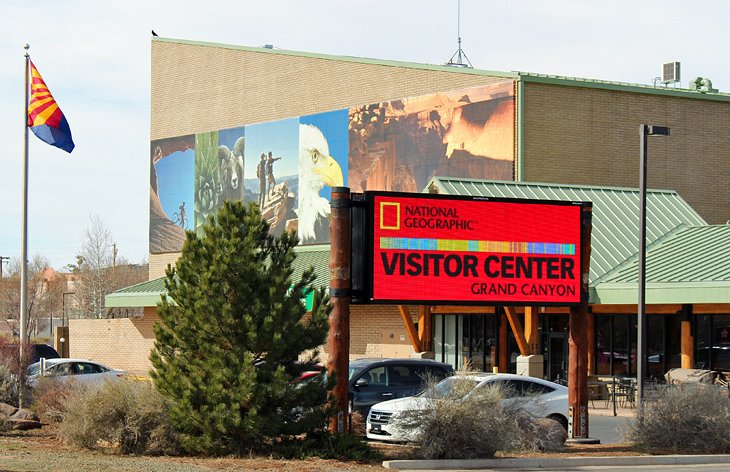
In the town of Tusayan, just outside the South Entrance to Grand Canyon National Park, is one of the oldest IMAX Theaters in existence, and seeing a movie here has been a long standing tradition for families coming to the canyon.
The movie, Grand Canyon: The Movie (Grand Canyon: The Hidden Secrets), one of the longest running IMAX movies to be shown in the same location, is a 34-minute film and begins on the half hour. In addition to seeing the film, visitors can also get information on the park or grab a bite to eat at the on-site café.
Nearby: Little Colorado River Overlook
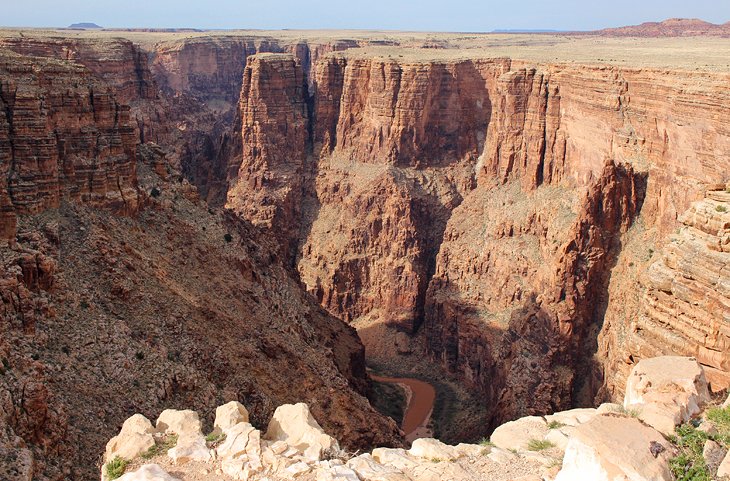
Leaving Grand Canyon National Park via the east side of the South Rim, through the Desert View entrance, the first sign-posted scenic lookout offers an incredible view over the Little Colorado River. This stop is on Navajo land, and in the parking area, Navajo artists sell handmade jewelry. This used to be free but now an admission is charged.
A short stroll along a wide trail beyond the parking lot leads to a lookout area (with railings) with direct views over a portion of the gorge. From the edge, the Little Colorado River is visible far below.
Grand Canyon West Rim Attractions
Skywalk & Eagle Point
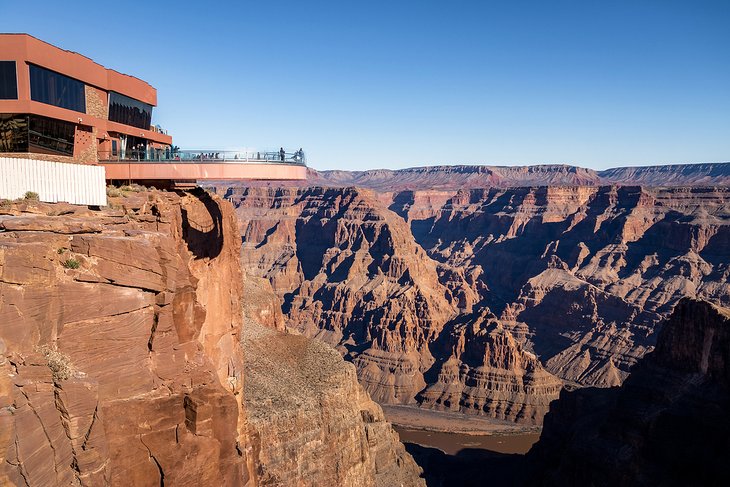
If you've seen pictures of the glass bridge jutting out over the Grand Canyon and have your heart set on this experience, Eagle Point, at the West Rim, you can reach it in about a four-hour drive from the South Rim. This horseshoe-shaped glass walkway extends out 70 feet over the canyon, allowing you to peer straight down.
You can also dine at the Sky View restaurant and look out over the Skywalk. Other things to do here include watching Native American dancing and visiting the Native American Village.
Grand Canyon Tours
Helicopter Flight over the Grand Canyon
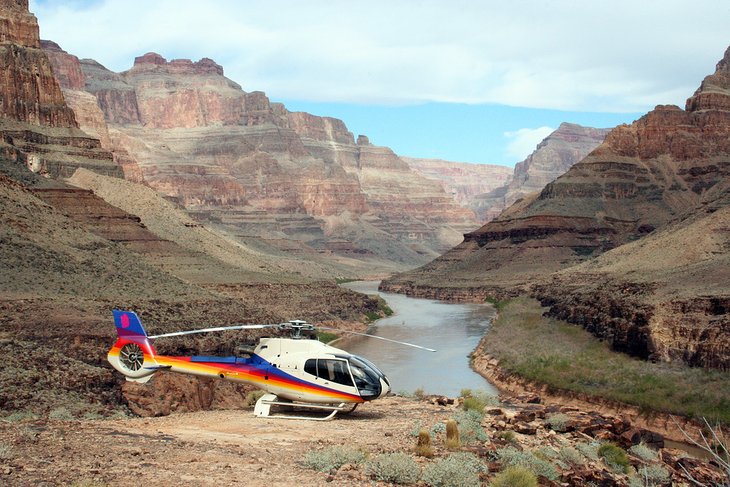
If you want to see the Grand Canyon from the air, take a flight-seeing tour in a helicopter and soar out over the abyss to get a bird's-eye view.
Several companies offer helicopter tours from the Grand Canyon Airport in Tusayan, less than a 10-minute drive from the South Entrance of the park. These flights typically last about 25 to 50 minutes depending on what you choose, and they take you out over the the canyon and several other key attractions. Some companies will combine a helicopter tour with a ground tour in a 4x4 vehicle.
Grand Canyon Railway Adventure from Sedona
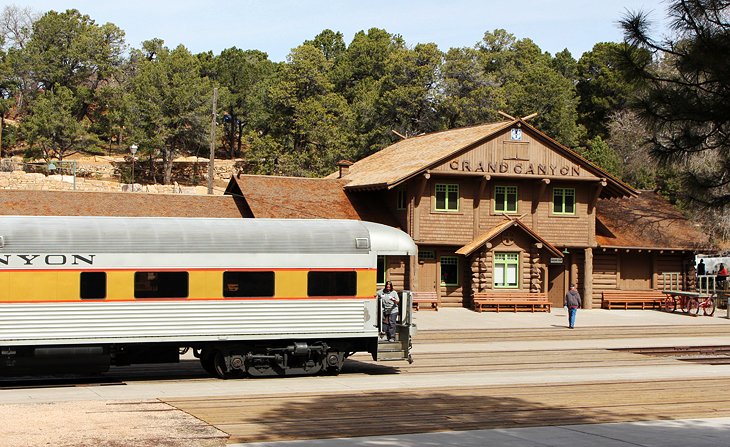
You can combine a luxury train ride through the desert with sightseeing at the Grand Canyon on a full-day Grand Canyon railroad excursion from Sedona.
This tour if offered by various local tour operators and typically offers pickup from your hotel in Sedona and takes you to the train station in Williams. The train then travels through the Arizona high country to the South Rim of the Grand Canyon, where you then have free time to explore and a guided rim tour.
This is one of the easiest ways to see the Grand Canyon, with no driving or parking hassles.
If you have time to spare, you can enjoy a bit of sightseeing in Sedona or Williams.
White Water Rafting in the Grand Canyon
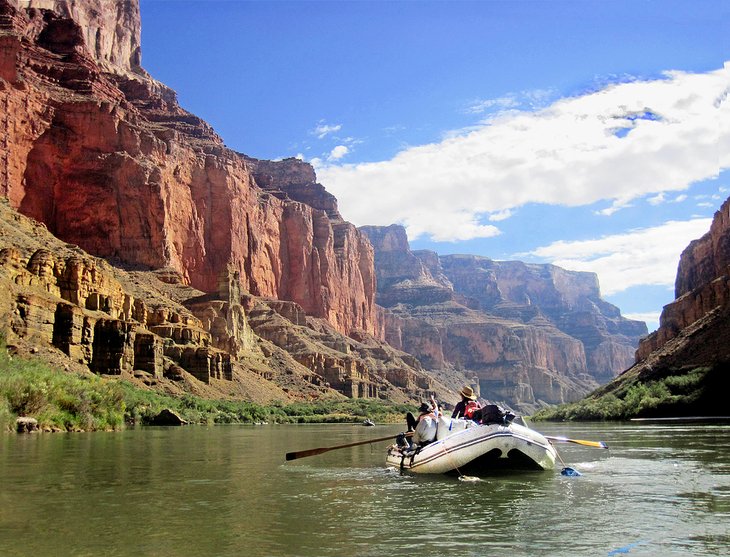
White Water Raft through the Grand Canyon is one of those bucket-list things to do in the United States. Many people consider it to be the experience of a lifetime. You may also hear people say it's a wild ride and more difficult than they expected. Nights are spent camping along the river's edge and days are spent on the water.
Several options are available, with trips generally taking between 3 and 18 days and many outfitters providing this service. The national park lists the river concessioners offering commercial trips through the Grand Canyon.
South Rim Mule Rides
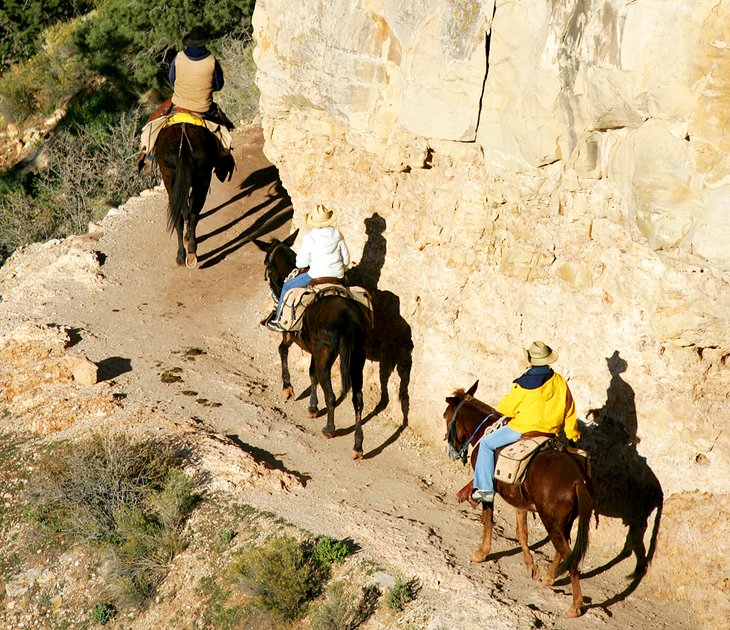
If you are interested in heading down into the Grand Canyon but are not up for the hike, mule rides are offered year-round from the South Rim. The mules carry guests down the Bright Angel Trail on a 5.5-hour trip for an overnight stay at Phantom Ranch and then return the next day. http://www.grandcanyonlodges.com/things-to-do/mule-trips/
Getting to the Grand Canyon
The Grand Canyon, as the name suggests, is big. Planning a trip here requires a bit of thought on where to stay and how to reach it. Making the trek to the South Rim, in the far northern reaches of Arizona, can take time.
If you are heading to the Grand Canyon from Las Vegas, plan for a long day of driving, as it will take you 4.5 hours one way. You may also want to consider taking a tour.
Phoenix is a slightly closer option, with a one-way drive time of 3.5 hours. You have several options for getting from Phoenix to the Grand Canyon if you don't want to drive yourself.
Closer yet is Sedona at two hours. The drive is scenic, but you may want to look around rather than watch the road. You can easily base yourself in Sedona or Flagstaff and visit the Grand Canyon on a day trip. You'll find some spectacular resorts in Sedona and a range of accommodations in Flagstaff.
Read More: From Sedona to the Grand Canyon: Ways to Get There
Map of Attractions & Things to Do at the Grand Canyon
Best Time to Visit Grand Canyon National Park, AZ
| Average minimum and maximum temperatures for Grand Canyon National Park, AZ in °C | |||||||||||
| J | F | M | A | M | J | J | A | S | O | N | D |
| 3 -9 | 4 -8 | 7 -6 | 11 -3 | 16 1 | 23 5 | 25 8 | 23 8 | 20 4 | 14 -1 | 7 -6 | 4 -8 |
| PlanetWare.com | |||||||||||
| Average monthly precipitation totals for Grand Canyon National Park, AZ in mm. | |||||||||||
| 95 | 87 | 93 | 37 | 22 | 12 | 47 | 55 | 45 | 52 | 47 | 63 |
| Average minimum and maximum temperatures for Grand Canyon National Park, AZ in °F | |||||||||||
| J | F | M | A | M | J | J | A | S | O | N | D |
| 38 16 | 40 17 | 44 21 | 52 26 | 61 33 | 73 41 | 77 47 | 74 46 | 68 40 | 57 30 | 45 22 | 40 17 |
| PlanetWare.com | |||||||||||
| Average monthly precipitation totals for Grand Canyon National Park, AZ in inches. | |||||||||||
| 3.7 | 3.4 | 3.6 | 1.5 | 0.9 | 0.5 | 1.8 | 2.2 | 1.8 | 2.0 | 1.8 | 2.5 |
Grand Canyon National Park is open year-round, and the views are outstanding no matter the season. But the best time of year to visit the Grand Canyon is spring (March - May) and fall (September - October). With June through August associated with summer vacations and breaks from school, the spring and fall months are less crowded and have pleasant weather to enjoy the big landscapes.
April typically ushers in a break from winter weather on the South Rim of the Grand Canyon, though snow can still be in the forecast through May. Average temperatures begin to reach into the 70s throughout the spring, with below-freezing overnight temperatures occurring throughout the season. The spring is one of the best times to hike the Grand Canyon, before interior temperatures reach their 100-plus-degree summer heat.
Mid-September is when summer crowds subside at the national park, making the fall one of the best times to travel to the Grand Canyon. The national park also enters its drier season in the fall, and localized rain and thunderstorms become less frequent. Fall temperatures drop from 70 to 50 degrees Fahrenheit on the South Rim throughout the season, and interior temperatures drop from the upper 90s to the upper 60s.
